
52 minute read
Celebrating Meb Norton
Celebrating Meb Norton - 43 Years of Service
Meb and I were sitting at lunch on the lakefront one Saturday, and a woman came up to our table. “You’re Mrs. Norton, aren’t you?” she said in a tone of delight. “Your voice is in my head!” “I remember you reading us stories when I was in lower school.” I think this is a form of immortality!
Her voice is in my head, too. I can still remember when I answered a blind ad for a librarian for a private school in Metairie. I got a phone message: “This is Meb Norton from Country Day. Please call to schedule an interview.” “Wow,” I thought. “Country Day – great!” If I knew then what I know now, I might have said, “Wow, Meb Norton – great!”
Because, lots of the wow factor of Country Day for, lo these many years, is attributable to Meb Norton. The “Howards” (Howard Barton and Howard Hunter) have spoken of her contributions to middle and upper school, so I will try to limit my praise to her lower school efforts – many of which resound throughout what she has identified as our beloved community.
Meb Norton started at Country Day as the lower school librarian in 1975. There was no library program then – she built it all. We now teach 22 classes – with her customary vision and intelligent enthusiasm, she has set us a high standard.
One of her great gifts is the ease with which she turns abstract ideas into tangible reality. This might best be illustrated by the lower school library itself. Initially, it was two adjoining classrooms. Meb had the idea to improve it by combining the rooms into one large space. This plan was met with approval, and the demolition project was placed on the “TO BE DONE” list – we all know these lists. Meb grew impatient with the time it was taking so one weekend she, her husband Dwight and her assistant Bonnie Tollefson came in and knocked down the wall. By Monday, it was a fait accompli – and open for business.
She went to a conference once and heard noted librarian Dr. David Loertscher talk about an unlimited checkout policy as a central part of the best school library programs in the country. We are the only school in New Orleans that has this – the other ISAS librarians speak of it with awe and a touch of envy since they allow one or two checkouts – total – per student. Amy White and the admission team always mention our policy on their tours. We’ve had some feedback from new parents who say this library enrichment helped to tip the scales in our favor.
Another time, Meb read a short article in American Libraries Magazine. From the seed it planted grew the Stump the Librarian contest that has been running since 1982. This year we had 187 entries. We have alumni who still participate. There are families who keep a notebook in the car to jot down possible questions. One parent told me her daughter works on her question all year round. Some of our best and brightest students call it a favorite part of the Country Day magic.
Then, again, Meb read an article about a research game called Calendar Clue, and lower school students have been playing it ever since, coming in each day to check new clues and hone their research skills. Again, Amy and her tours can tell you all about it.
Meb’s abilities have not gone unnoticed on the national scene. She served on the American Association of School Librarians board, representing Independent School Librarians for 3 years, on the Pura Belpré Award Committee of the American Library Association for two years, and on their Caldecott Committee the year they chose Paul Zelinsky’s Rapunzel. And she had a night job! -- Meb spent ten years teaching a class in “Information Literacy and School Library Administration,” at UNO.
Bringing it back home, she has been invaluable as Director of Libraries. Her passion is for Country Day and its libraries. She insists that we librarians serve our community – students, faculty, staff, whoever wants to learn – to know. Withal, she is practical – she plays to our strengths and helps us to give our best. She is discerning and does not mind telling us when we go awry. She is encouraging – she gives her all and leads by example. She takes the high road in all of her dealings.
Oh, yes, Meb Norton’s voice is probably in your head (listen to it). It is certainly in mine – and I am so glad of it! Thank you, Meb.
Meghan Kelly, Lower School Librarian
IN MOTION
BY MARISA LEDET, PHYSICS TEACHER
Many are impressed by the cosmos, by advances in medicine, or by the latest breakthroughs in science and technology. When I ask other teachers and students about “the great scientific breakthroughs” many respond by citing Albert Einstein, Isaac Newton, or Marie Curie. Rightly so, these individuals greatly advanced theories and concepts of physics, discovered new elements, and introduced lifesaving medicines. However, I would argue that watching our students progress through mathematics problems, computational thinking, and design solutions is just as aweinspiring. I guess that’s one of the things that define me as a teacher and as a lover of learning. Below are examples of how Country Day prepares our students for life’s unknowns and for a lifetime of discovery.
Here students are completing a rocket lab, where they predict the motion of the rocket based on the calculation of its initial velocity. Students first shoot the rocket straight in the air, and use their stopwatch to measure how long it takes for it to reach the ground. This time is divided by two to get the time to the highest point, where the velocity is known to be 0. Using the equation vf = vi + at, where “a” is the free-fall acceleration of gravity, students can then calculate the initial velocity of the rocket when launched. After they complete this initial calculation, they then launch the rocket at an angle that is measured with a protractor. Using their knowledge of projectile motion, and that gravity only affects the vertical component of their rocket’s velocity, they calculate how far the rocket should travel horizontally. After all the calculations are complete, they test their calculations by firing it near the football field. The distances are always nearly perfect, with some error due to air resistance that cannot be accounted for in an introductory physics class.
The physics course at Country Day exposes students to the mathematics that predicts the outcome of phenomena in the real world, while also challenging them to put to use their knowledge of mathematics into design solutions. These design can be high or low-tech, depending on the situation. For example, one of the high-tech design projects involves the use of whitebox learning software, a program that allows students to master concepts of Newton’s Laws, Center of Mass equations, frictional forces, with an introduction to drag forces, that gives the students the basis to design the fastest dragster. This engineering project involves students switching out wheels, drafting the shape of their cars, etc. to produce the fastest model. These models can then be tested in the simulated software, so that students can make iterations of their designs in a timely and cost effective manner.
Another project that students completed, is a traditional design of a vertical loop roller coaster. After studying both conservation of mechanical energy, and circular motion, students have to design a pipe insulation roller coaster for a marble. The two criteria are that the marble has to be able to make it around the top part of a vertical loop, while also keeping the centripetal acceleration at the bottom of the loop to less than 4G’s. Students first calculate their designs then test their marble to see if it works.
All activities and projects in the course are designed to give our students the foundation to continue to build their science knowledge from the basics of Newtonian Mechanics, waves and sound, and electricity and magnetism. The course is designed so that students not only observe the natural phenomena, but they can represent it mathematically, make predictions about future outcomes, and to also put their knowledge into new products and designs. That’s magnificent.

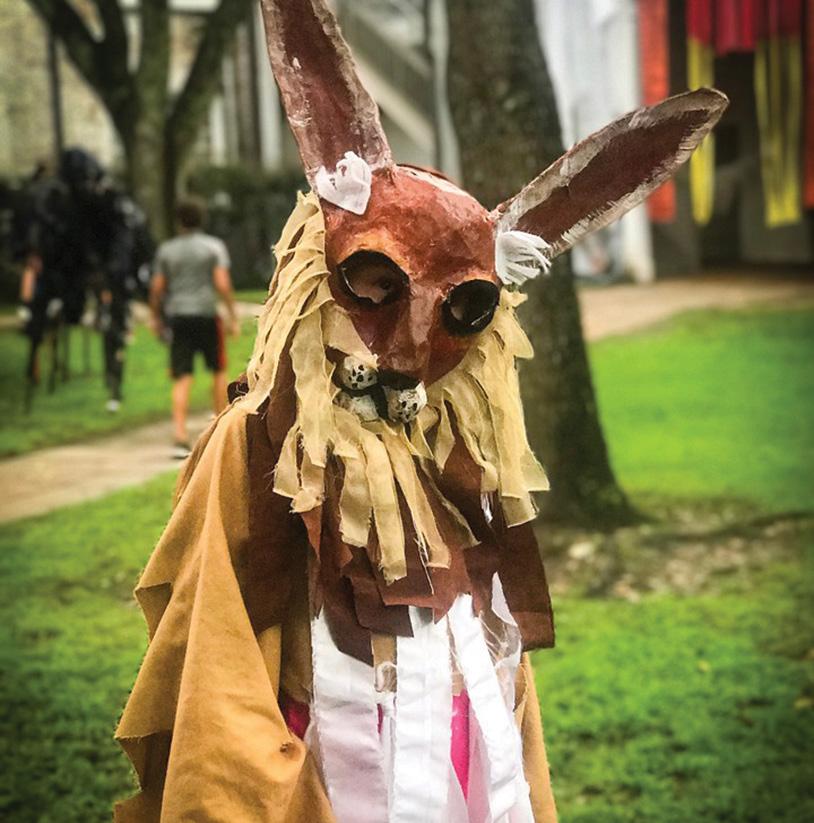
GO DOWN RABBIT HOLES LET THE PERFECT BE THE ENEMY OF THE GOOD



CREATE FOR YOUR S E L F, NOT JUST FOR PATRONS

Summer Reflections
The Country Day Creative Arts Program Experience
BY SUSAN GISLESON, CDCA DIRECTOR
COLLABORATE
T AIN A CHILDLIKE SENSE OF WONDER E R T LESSLY CURIOUS N BE CURIOUS , RE L E
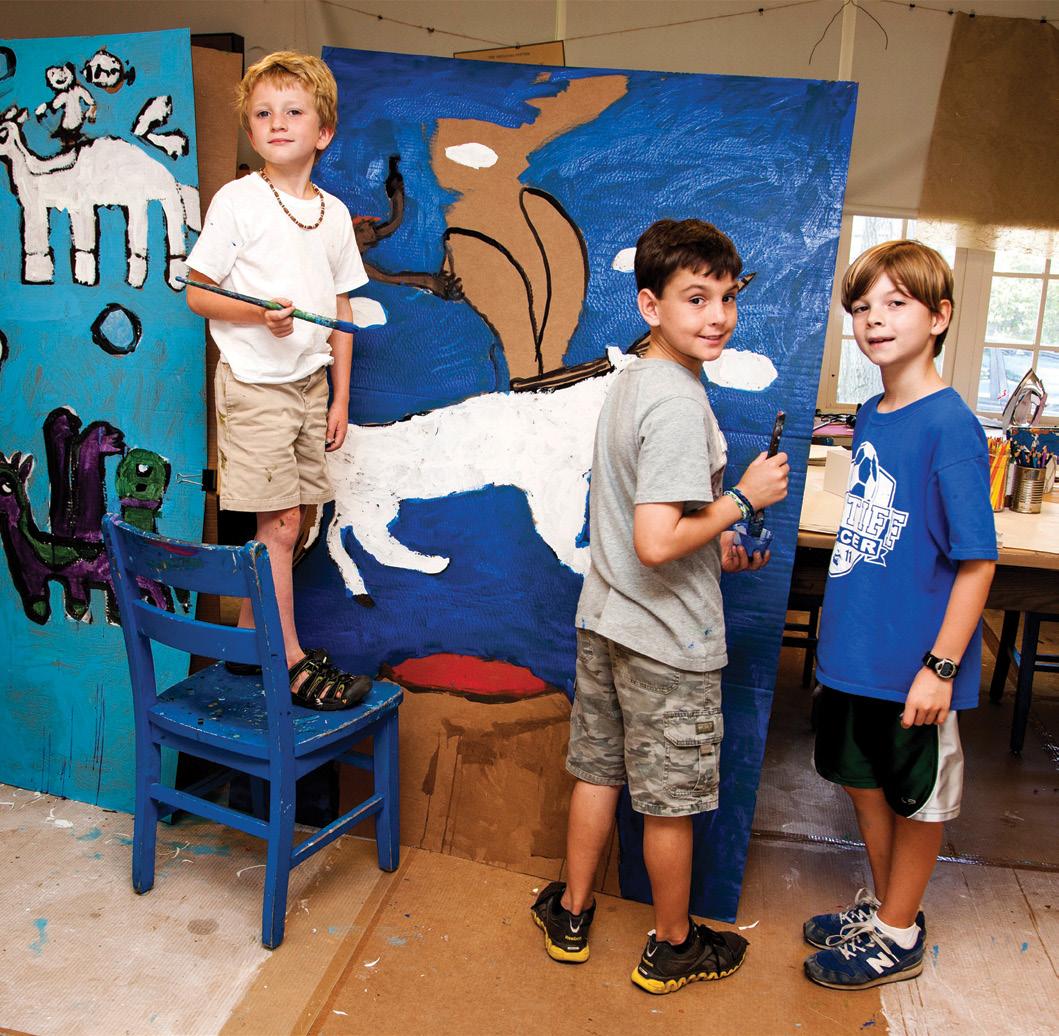


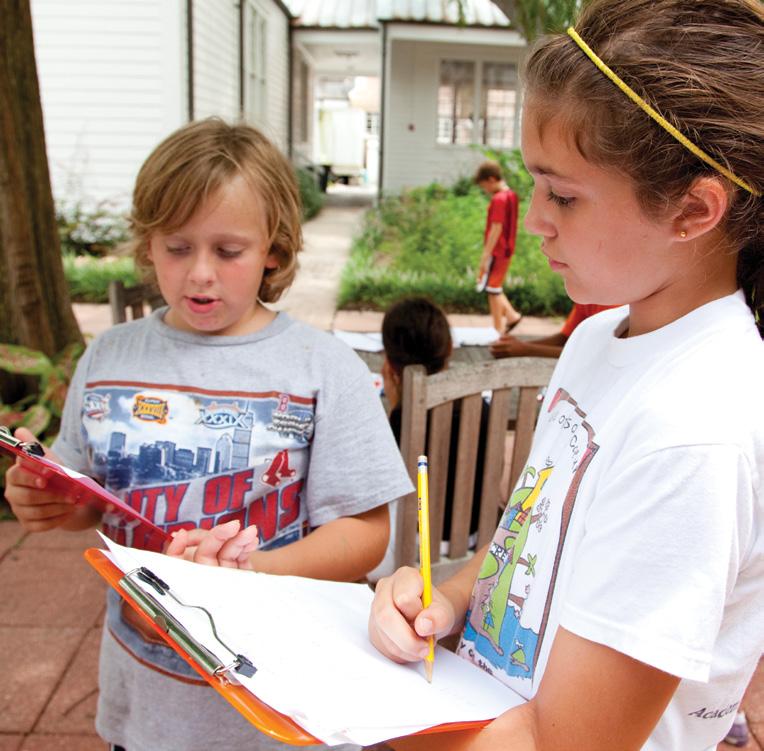
For the last nineteen summers I have been involved in an extraordinary enterprise. It is a collaboration between 400 artists, 75 professional ones and 325 between the ages of seven and 14, which takes place over five glorious weeks on the most beautiful campus in the state of Louisiana. During the five-week program we create a community with kids from over 50 schools in the surrounding parishes. We believe in the limitless ability of children to imagine, to make believe, to dream a world where anything is possible. We create an atmosphere of support that gives our young artists the ability to take risks and grow.
I believe in the power of arts education, the power of making things, in the magic of a childhood summer and the impact it can make on a child’s growth and self-esteem. Arts education promotes critical thinking and problem solving as well as exercises the imagination. Imagination is a vital skill; you can’t have empathy, one of the most important human traits, without imagination. Walter Isaacson wrote biographies on Albert Einstein and Leonardo Da Vinci and discovered that what they had in common was the propensity to dream and to ask questions that most people stop asking when they are seven years old: “why is the sky blue?” or “how do birds fly?” Arts education encourages inquiry at all levels. For thirty-seven summers, Country Day Creative Arts (CDCA) has nurtured inquiry in thousands of children. Sara Stevenson created this program, and I would venture to say that she thought about how to make it better every single day. Even before the program starts the kids are part of the process. Art is a series of decisions and participants begin the art making process by choosing what classes they want to take. There are over 120 classes taught every day in visual, performing, and physical arts and these classes are taught by dedicated professional artists who fervently believe in their craft.
The kids choose their classes before the program begins from a packet of enticing course descriptions that is 16 pages long. They circle ten from the list but ultimately take five classes a day. We have two full-time schedulers who, over the course of two weeks, make 325 different schedules. Changing classes is a big responsibility for kids, moving from building to building on what is for many a new campus, but they do it and some are seven years old! That in and of itself is a big accomplishment. It demonstrates to them right away that they are capable of big things.
I have taught at CDCA for eighteen summers. My background was costume design and for the first two summers I taught classes based on costumes or textiles. I gradually became more interested in sculpture in my personal work-although you could argue that costumes are a type of sculpture. I found that teaching people ages 7-14 was a huge thrill as well as inspirational. Children have an innate inquisitiveness. One summer, I taught an armor class and one of the boys found a box of pull tabs from soda cans and used them to make chainmail for his helmet. He saw the world and the materials around him with a different perspective.
One of the great assets of the program is Country Day’s campus. Every summer the courtyard is transformed. I would teach classes that were more like collaborations with children-the original surrealists. For my final summer teaching we built a miniature golf course based on the Odyssey. The kids made their clubs from baluster dowels. Every hole illustrated a different island where Odysseus was stranded. For the island of Polyphemus, the Cyclops, the kids made a garden of giant eyes using slide carousels for the irises. For the Land of the Lotus Eaters they each made a huge flower, the kind you find on Orpheus floats.
Country Day Creative Arts culminates with the arts festival. At the end, we display thousands of original works of art outdoors from classes that include projects in drawing, painting, sculpture, mixed media, comics, book making, mosaics, fiber arts, woodworking, costumes, claymation, animation, photography (darkroom and digital), puppetry, robotics, video, and more. We have over 25 performances that include acting, drumming, singing, dancing, Capoeira, Giant puppets, stilt-walking, and Circus arts, to name a few. It is a phenomenal evening that is open to the community, a lot of educators from surrounding schools attend to get ideas for their school year curriculum.
MAKE LISTS

SUMMER FUN
I remember the first time I went to camp. It was 1976, the year when everywhere you looked you saw red, white, and blue. We were performing a skit, and someone put a black flamenco hat with red ball fringe on my head, grabbed a piece of charcoal from a cold BBQ pit, and drew on a mustache. Just like that I was a flamenco dancer! It was epiphanic! When you put on a costume, when you pretend, you can become someone else, if only for a few moments. It awoke my love of costumes and the use of non-conventional materials to tell stories.
There is an unmistakable magic of a childhood summer. It’s a relatively short time, only a couple of months, but substantial in terms of a life. Children dream of summer throughout the entire school year. But it is also a time of huge growth, metaphorically and literally. Kids are more willing to try things when they are not being graded or judged. In the summer, the days are longer, bedtime is later and there is less pressure- THINK VISUALLY except perhaps for the humidity. I know students who think about CDCA all year long and have a countdown on their phone until the program begins.
THE POWER OF MAKING THINGS

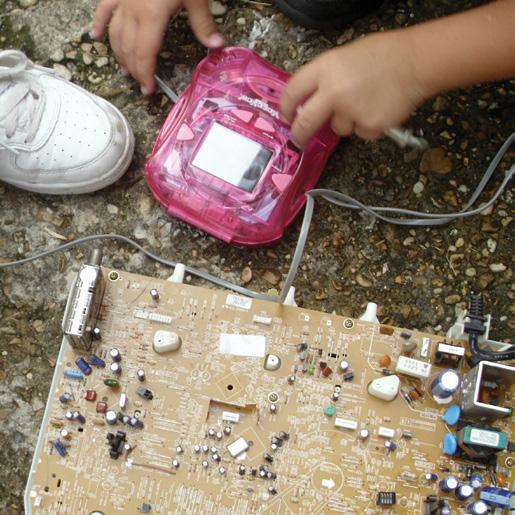
Immanuel Kant famously said, “I think therefore I am.” For me it has always been, “I make therefore I am.” I had a 1970’s childhood. I watched Sesame Street whose name came from the magic of “Open, Sesame,” something hidden,
OBSERVE a mystery, coming to view. I watched Mr. Rogers who spoke to children as if they were thinking, feeling human beings and not simpletons or playthings. He showed us how the world worked: the wonders of mechanics, mesmerizing Rube Goldberg machines, how one thing causes another and the importance of other people in the world, those who live next door.
Down the street from us lived a woman who did art projects with kids all summer long as well as seasonal crafts. I still have a styrofoam Christmas ornament I made with her. She taught me the power of making things. That making things gives life purpose, gives life meaning. I remember taking scraps and sewing them together into squares and the squares into a quilt. Another time, we made marionettes with a wooden block for the body, dowels for the legs, and arms and a ball for the head. I learned that the word for doll comes from the word “idol” and that the word bead comes from the word to pray, “bede.”
Working with children is, in itself, very rewarding but there is something really special about creating artwork with them. Childhood is only a fraction of our life and yet it informs who we are as adults. Their development is so rapid in terms of manual dexterity as well as grasping different concepts and ideas that their artistic abilities change greatly from year to year. A painting done one summer encapsulates that time and holds onto that moment in their life like an insect in amber. It is almost as though you can look back in time by looking through their art.

IMAGINATION
I believe in the power of make believe, the power of creativity. I believe imagination is important. Inventions require imagination. The printing press wasn’t conceived of as a whole; it was a modified wine press. Guttenberg saw one machine and imagined another. It is an integral part of evolution. Walter Isaacson wrote, “What made Leonardo a genius, what set him apart from people who are merely extraordinarily smart, was creativity, the ability to apply imagination to intellect. His facility for combining observation with fantasy allowed him, like other creative geniuses, to make unexpected leaps that related things seen to things unseen.”
For years CDCA has explored countless ways of making art. We have embraced technology as another tool, another way to express ideas. This summer we will be offering classes in Adobe Photoshop, filmmaking as well as classes that will have projects that explore projection mapping, green screen technology, robotics, and understanding electricity. During the summer, these sophisticated tools co-exist with the understanding of the importance of play. That play is research for children to understand the world around them. Past CDCA Program Director Sara Stevenson began her career in community organizing. She knew that community is essential to a happy life; that to connect to the people and events around you, results in an enriched and meaningful experience. At Country Day Creative Arts, we have children from over 50 different SEEK K N O WLEDGE FOR ITS OWN SAKE schools. We create community through a shared space, our beautiful courtyard, and experiences such as Morning Meeting, Picnic Lunch, and our Noon Time Program where the kids experience a different performance every day. For the first two weeks of the program, the performances are by staff and community partners, but the last three weeks are performances by kids for kids. It is extraordinary to see what they can accomplish in just a few weeks.
CDCA creates a culture of support. One of the purposes of our Noon Time Program is to teach the kids how to be a good audience. It takes a lot of courage to perform on stage and having a respectful and enthusiastic audience makes it worth it. Before the program begins, the kids sign the CDCA pledge which states that they will show respect to people and property. They learn how to make art as well as how to protect it. When the courtyard is filled with art, they know it is something to be respected and appreciated.
Community gives a sense of security. We give our young artists security to take risks in a safe environment. Doing something you’ve never done before can be scary. We give them encouragement and support to try new things, use new tools, and that is very empowering. There is a great sense of accomplishment when you have an idea, develop it, and then make it a reality. Those two things: security and purpose are the roots of happiness.
Sara Stevenson created a program that is founded on respect, the importance of community, and the belief that children are capable of great things. I’ve always thought of it like Brigadoon, a mythical village in the Scottish Highlands that is based on pure imagination. CDCA has a magical quality because it is composed of artists and children who collaborate to make an extraordinary experience. As we enter our 37th year, my goal is to continue this tradition of excellence, inquiry, and exploration, to create a world where anything is possible. While reading Walter Isaacson’s biography of Leonardo da Vinci, I couldn’t help but recognize the similarities INDULGE FANTASY between the lessons he gleaned from da Vinci’s life and the daily machinations of Country Day Creative Arts.
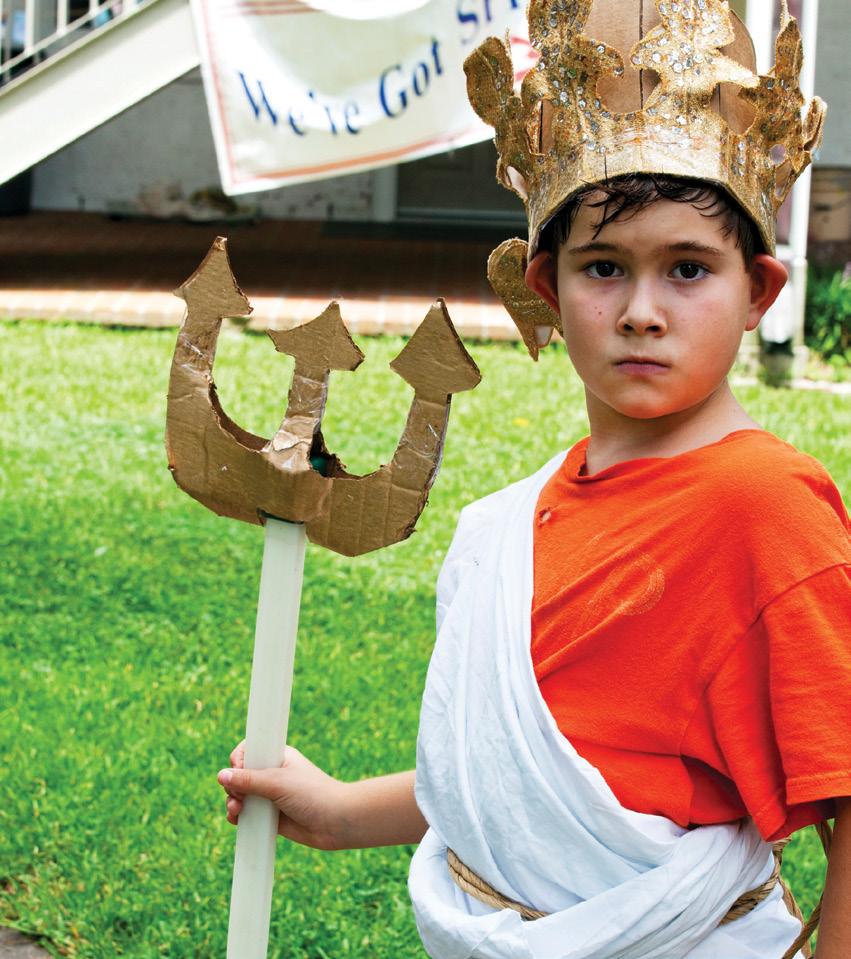
SEE THINGS UNSEEN
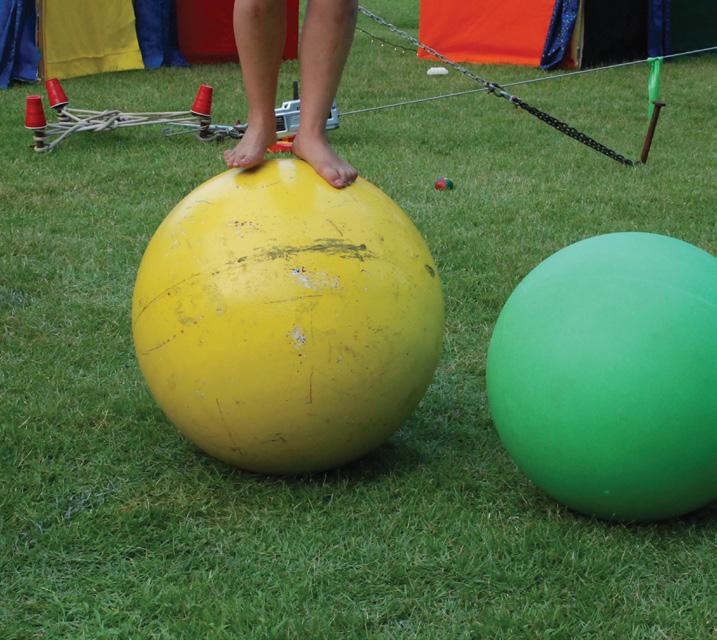


AVOID SILOS
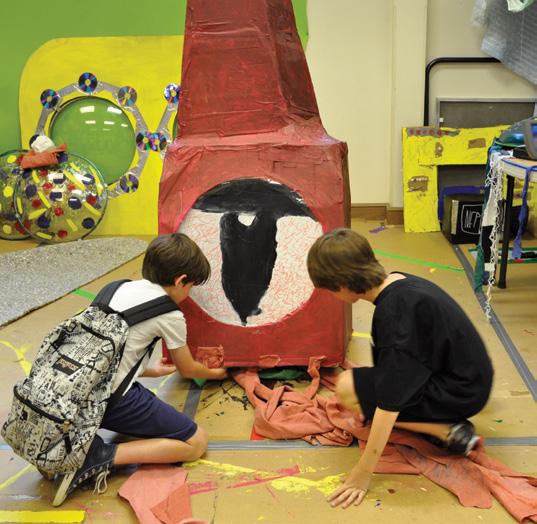



T A KE NOTES ON PAPER
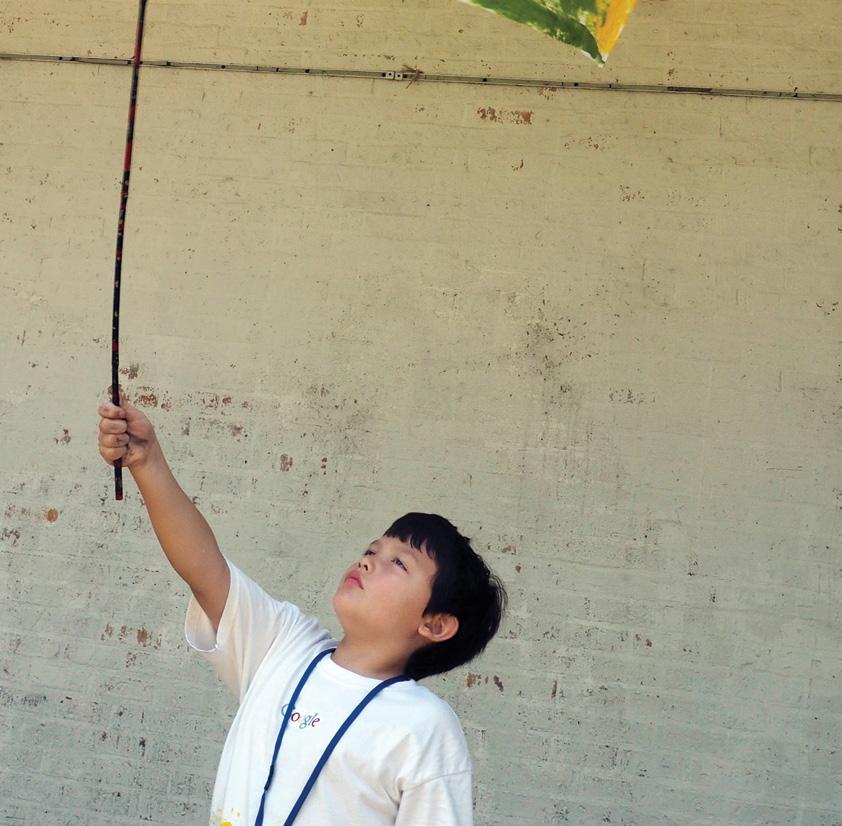
Lessons from Leonardo
BE CURIOUS, RELENTLESSLY CURIOUS.
SEEK KNOWLEDGE FOR ITS OWN SAKE
RETAIN A CHILDLIKE SENSE OF WONDER
OBSERVE
START WITH THE DETAILS
SEE THINGS UNSEEN
GO DOWN RABBIT HOLES
GET DISTRACTED
RESPECT FACTS
PROCRASTINATE
LET THE PERFECT BE THE ENEMY OF THE GOOD
THINK VISUALLY
AVOID SILOS
LET YOUR REACH EXCEED YOUR GRASP
INDULGE FANTASY
CREATE FOR YOURSELF, NOT JUST FOR PATRONS
COLLABORATE
MAKE LISTS
TAKE NOTES, ON PAPER START WITH THE DETAILS
RESPECT FACTS
GET DISTRACTED

Two national organizations unveiled new professional standards for school librarians, each highlighting the important role school librarians play in developing students’ media literacy. The American Association of School Librarians’ National School Library Standards ask librarians to help students “effectively communicate new ideas while acknowledging and respecting intellectual property rights.”1 The Future Ready Librarians Framework encourages librarians to empower learners to “become increasingly self-directed as they create digital products of their learning that engage them in critical thinking, collaboration, and authentic, real-world problem solving.”2
Librarians have always been concerned with media literacy. The earliest scrolls and tablets could be labeled as media, and librarians throughout time have collected and curated media in a variety of formats including books, manuscripts, academic journals, and DVDs, all in an effort to preserve knowledge and make it available to their patrons. Libraries are still places where patrons come to find and retrieve information (yes, even in the age of Google) in service of satisfying curiosity and synthesizing and sharing knowledge.
In her 2008 blog post entitled “Library as Domestic Metaphor,” Rutgers professor Joyce Valenza, former school librarian and Assistant Teaching Professor of Library and Information Science at Rutgers School of Communication and Information, encouraged librarians to think of their spaces as kitchens rather than grocery stores. “Our libraries should not be grocery stores. We need to use those groceries, to open the boxes, pour the milk, mix the batter, make a mess. We need production space. We need to serve up our creations in presentation or story space. We need to inspire masterpieces of all sorts.”3 Valenza imagined school libraries as a space where patrons not only browsed and collected ideas, but mixed and experimented with them in an effort to create something new.
This shift in mindset has significant implications for how we teach media literacy. It is still important for students to understand how media is made and distributed, how to identify a source’s authority, purpose, and point of view, and how to develop healthy habits of media consumption. It is also important to acknowledge that any definition of media literacy falls short if it fails to acknowledge our students as media producers. We know that smartphones and computers have empowered students to create content while social media platforms have allowed them to bypass traditional gatekeepers such as editors and publishers (and parents) to share their work with a wide audience.
What is the school library’s role in this new media landscape? It is still important to continue our work of teaching students how to identify quality sources, how to seek out a variety of viewpoints in service of making informed decisions when producing scholarly work, and how to share that work responsibly and ethically. What has changed is our desire to support students’ roles as media producers - beyond the traditional research paper - and how this mindset can potentially open up dynamic, engaging pathways to teaching traditional media literacy skills related to consumption.
As always, Country Day’s Bright Library is here to help students find and use quality media. As we look to the future, we also want to be a resource for stakeholders who are developing as media producers. A new video production lab - complete with green screen, camera and lighting equipment, and editing stations - as well as a sound recording room for creating podcasts and interviews is now available to students. With this ever-changing landscape before us, we can be certain of one thing; librarians will always have a place in supporting their community in collecting, synthesizing, and sharing information. h
1 American Association of School Librarians, “Shared Foundations: Engage,” National School Librarian Standards, last modified 2018, https://standards.aasl.org/wp-content/uploads/2017/11/SharedFoundations_Engage_2017.pdf. 2 Future Ready Librarians, “Empowering Leadership for School Librarians through Innovative Professional Practice,” Future Ready Schools, last modified June 2018, https://1gu04j2l2i9n1b0wor2zmgua-wpengine.netdna-ssl.com/wp-content/uploads/2017/01/ Library_flyer_download.pdf. 3 Joyce Valenza, “Library as Domestic Metaphor,” Neverending Search (blog), entry posted August 25, 2008, http://blogs.slj.com/neverendingsearch/2008/08/25/library-as-domesticmetaphor/.
My family arrived in New Orleans at the beginning of the summer of 1956. I was 14 years old at the time and had always attended public schools. Some members of our church persuaded my father that there was an exceptional private school in Metairie to which he should send me, taking advantage of one of the crown jewels of the progressive school movement, Metairie Park Country Day School.
Thus, it was that I found myself in Mr. Boothby’s office being interview by the great man himself in hopes of qualifying for acceptance into the Class of 1960. Little did I know that the interview was the first of many contacts I’d have with various heads of the school. As a matter of fact, I only missed meeting one Country Day Headmaster, Mr. Carter Hall. I had various interactions with all the others. Here is my take on some of the illustrious individuals who have led the School throughout my life, starting at age 14 and ending at the present time, as I enjoy a continuing relationship with this wonderful school.
Mr. Boothby was retiring that summer. As the founder of Metairie Park Country Day, he had been its only headmaster since the founding of the institution in 1929. Of course, I had no idea that this earth-shaking transition was taking place; but, looking back, two vivid impressions remain with me from my brief period of interaction with this legendary man.
The first was that listening is an important part of a conversation. Mr. Boothby was a very talkative individual. He did about ninety percent of the talking during that initial interview, and I listened attentively to his every word. As we parted, he complimented me on being a good conversationalist. It took a while before I could make sense of that compliment. At first, I thought it pretty odd that he had judge me a good conversationalist when he had done all of the talking. But I think he was right, and I have remembered that incident ever since and tried to keep my mouth in check when another party gets up a good head of steam in the talking department.
The other memorable Boothby interaction came later in the year when I was resting my brain out in the courtyard. Mr. Boothby would sometimes come to the campus and wander around. On this day, he approached me, something obviously on his mind.
“What are you up to, young man?” he inquired.
“Good morning, sir,” I replied. “I just finished all of my assignments for the day, and don’t have anything else to do right now.”
“Have you read every book in the library?” he asked.
I have a hunch I wasn’t the first young loafer to get that question from our founder. I don’t know whether this has any direct connection to that incident, but I now read a minimum of fifty pages a day and love it.
Mr. Nelson took over the management of the School following Mr. Boothby’s retirement. He also took an active interest in the affairs of his students. I remember participating in something they called a “senior privilege” a few years later. After lunch, any senior who wanted to participate could repair to Mr. Nelson’s office for a gettogether with the head.
This was in 1959, and the Surgeon General had not yet warned us of the deleterious effects of smoking. When we were participating in what amounted to a bull session in the office of the head, we were allowed to smoke if we wanted to. Of course, we all wanted to. Never turn down a privilege when it’s offered.
The rule was that we could discuss any topic that anyone wanted to bring up, and we were free to express our opinions as we saw fit. Debate was supposed to be open and respectful, but there was to be no discussion when it came to matters of fact. It was one of our first exposures to the notion that we were entitled to our opinions but not to our facts. That’s a concept that seems to have lost some of its stylishness in recent times.
Following my graduation, I got busy with some other matters as I passed through that difficult portal between adolescence and adulthood. During this time, I acquired two degrees, a wife, two years of experience teaching tenth-graders at West Jefferson High

School, and six years teaching people to fly at Lakefront Airport. During this interval I was out of touch with Country Day School, and I missed the balance of Mr. Nelson’s tenure, all of Mr. Hall’s and most of Mr. Wright’s. I know nothing about Mr. Hall except that I have seen his picture hanging on the wall in the room that used to be the library and is now a boardroom.
I returned to my alma mater in the early ‘70s, having been offered a job teaching physical science. These were the days of double-digit inflation, and I hadn’t been getting any raises in pay out at the airport. One day, I went to the shop to pick up my Volkswagen Beetle and found that I didn’t have enough money in the bank to pay for the repairs. “What’s wrong with this picture?” I asked myself. “Here I am, a man of privilege who holds two college degrees, and I’m not making enough money to support a Volkswagen Beetle!”
I am perhaps the first person in the history of western civilization to seek a job teaching school to increase my income. Mr. Wright received me in his office for my final interview, the one where we talked cash. I told him how little I had been making, and that I hoped that he could do somewhat better for me. The most lasting impression I had of Mr. Wright was how enthusiastically he supported my wish for better remuneration and that he promised he’d try his best to do right by me when he reviewed the matter with the board.
Once again, I was joining the land of the daisies. Even though I was hired by Mr. Wright, it was Mr. Saltzman who took the reins the next school year. He was my favorite.
Mr. Saltzman had been a fellow English major and thought it was cool that a guy with a graduate degree in that subject was coming aboard as a science teacher. I think he also liked that I wasn’t a professional teaching drone but carried with me a variety of interests and skills. Some years later he commented about another recent hire that that individual would probably be a spectacular success or a spectacular failure as a member of the Country Day teaching staff. I suspect that he held the same opinion of me in my initial months of employment.
I now know you’re not supposed to do this, but I became good friends with Mr. Saltzman. He and his wife liked to hold faculty dinner parties, and my wife and I attended the little get-togethers regularly. It was a good way to keep his finger on the pulse of faculty affairs, and it also served to keep up morale among the teachers. I was sorry to see the Saltzmans leave; but, as Robert Frost’s poem states, “nothing gold can stay.”
Ned Becker was next on the list of my employers. Ned saw a glaring flaw in the way the first two administrators had been operating, that flaw being that they were trying to pay the bills using only tuition money. Particularly in the area of maintenance, things had been suffering from neglect as a result of a lack of funds. Mr. Becker started a development program. “Development,” it turned out, was another word for fund-raising. He started a capital campaign in an effort to keep up with the double-digit inflation that had been inflicting our society and to pay for replacing some leaking roofs, drain pipes, and electrical circuits that were in need of attention. Mr. Becker said that he liked to hire competent individuals and then get out of their way and let them do their jobs. I appreciated that sentiment. I couldn’t remember a single time when my job had been made easier, or when I had been helped to be a more effective teacher.
Mr. Becker resigned, and the School looked to hired an interim head to run the school while they could mount a search for a new permanent headmaster. The rule was that the interim head would serve for a limited term of employment, probably on the order of two school years, while the process had a chance to identify qualified candidates for our next permanent head. Supposedly, the interim head would not be a candidate for the permanent job.
The interim person they selected was Dr. David Drinkwater. Dr. D, as I called him, was a very different kind of administrator. He developed a concept of involving the employees of the School in reorganizing the place to effect better efficiency. This approach made him somewhat controversial; and when he fell in love with the School and decided to throw his hat into the ring as a prospective permanent head, he became even more so.
I liked Dr. D. He was extremely articulate and seemed well organized. At the end of the process, Country Day’s Board hired him as our next headmaster, and he went to work.
Everybody was put onto a committee to work on some aspect of creating and implementing a plan to remodel the campus to create a more orderly flow of learning that would put less emphasis on the divisions among lower, middle, and upper schools. As an example, the dining room at the time was too small to accommodate
the number of students as our population had grown over the years. It was necessary to have three separate seatings for lunch, and the serving of these meals had to be done on an inflexible schedule that sometimes interfered with the scheduling of other events during the day. Since the upper levels worked on a rotating schedule, it was particularly clumsy when guest speakers and field trips had to be worked into the mix. The solution was to enlarge the dining room so that more people could be seated and time could be freed up for other things.
As much as I enjoyed working for Dr. D, I had come to a juncture in my life when the time demands of teaching and of keeping up with my secondary occupation of examining pilot candidates for the FAA were preventing me from starting anything new. For example, I had always wanted to write a novel. But there simply wasn’t time in my busy life to do that. My wife and I liked to travel, but prime travel time happened when kids were in school, and we were blocked from participating in some things we fancied that took place during the spring and the fall.
So, at age 55, I decided to pull the plug on my teaching career. In 1998, I bid adieu to the teaching “profession” and set out to gain control of my own schedule.
Not too long after that, a horrible storm had its way with the campus and drove many of our community out of town. Dr. Drinkwater had been pulling up stakes in preparation for leaving his post; but a steady, experienced hand at the helm was needed at this time, and he stayed behind to assist his replacement in getting the place back into functional shape. Thus, it was that we had two heads for a while. Carolyn Chandler was due to replace Dr. D. in the Head’s office, and the two of them had a cooperative relationship for a while during the recovery.
I met Mrs. Chandler at a gathering of some old-timers on campus. Someone had gotten the idea that it would be a good idea to expose some newly hired staff to some of us veterans of the good old days, in an effort to acclimate them to the culture. The new head knew my name and greeted me like an old friend. She had a remarkable personal magnetism that made you an instant friend and ally.
I’d appear, once in a while, for various functions on campus such as alumni weekends, and Carolyn would always look me up and have a conversation about something I’d be interested in. For example, I remember our talking for about a half-hour about what would be a good title for my novel.
In the entire span of her leading the school, I never once heard anyone complain about her. When you think about the many groups with sometimes conflicting interests that a head has to handle, like a juggler with five balls in the air, that’s a remarkable achievement. She was one of those people who were married to the job; but that status never seemed to lead to burn-out, as it so often does with average administrators.
Maybe she could see the end of a career looming on the horizon, but she certainly had a spectacular run as the first female head of school. It seems that she was also able to bring the master plan to fruition, with several new buildings going up and lots of remodeling taking place at the end of her tenure.
Mr. Neely took over during the summer of 2017. It was a while before I had a chance to meet him. I understand that he did some traveling around the country to introduce himself to some community members who had not yet returned to New Orleans.
I was looking forward to a meet-and-greet that he held in January for some graduates in the new Coleman Family Dining Room’s private dining space. He shook my hand and greeted me warmly. Unfortunately, right in the middle of our conversation, I was afflicted with aphasia, an inability to recall the words needed to form a sentence. The new head literally left me speechless!
It turned out to be a very minor stroke, a so-called “TIA” that demanded my immediate presence in the emergency room of the nearest hospital; so I missed the remainder of that affair. I later had a chance to talk with him some more during the Boothby Club dinner and at the Crawfish Boil the next day. I got the impression that there’s a lot of substance within that attractive exterior. I’m looking forward to getting to know Mr. Neely much better and hoping that I can help him to succeed at the very challenging job he has taken on.
That’s the story of my sometimes-brief encounters with eight of our nine heads-ofschool. They’re an eclectic collection of individuals and I count myself fortunate to have known them. h
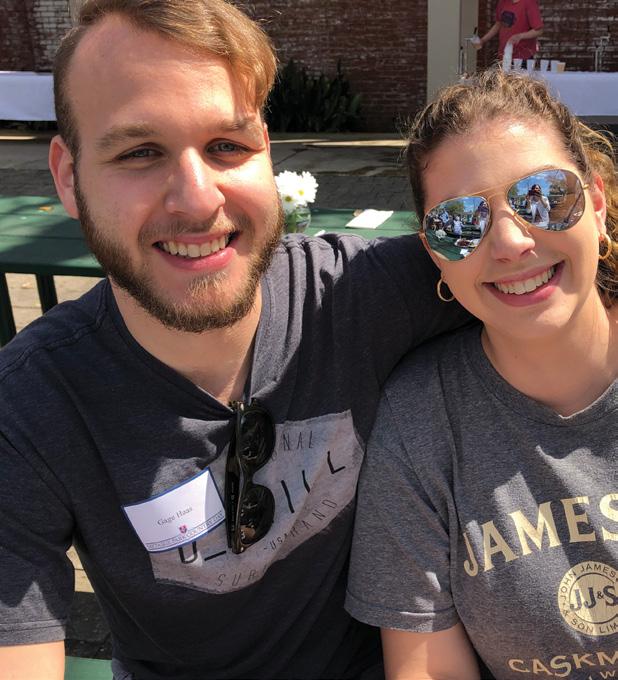

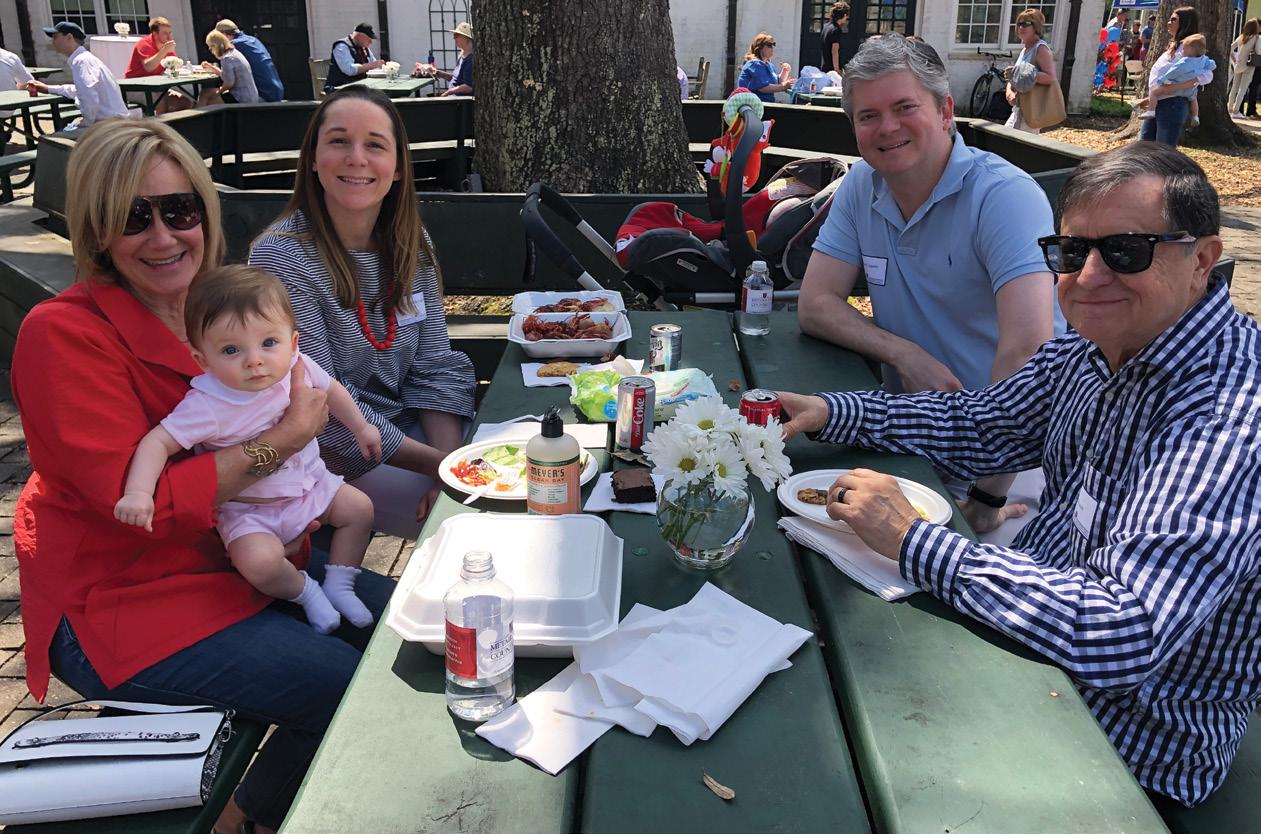
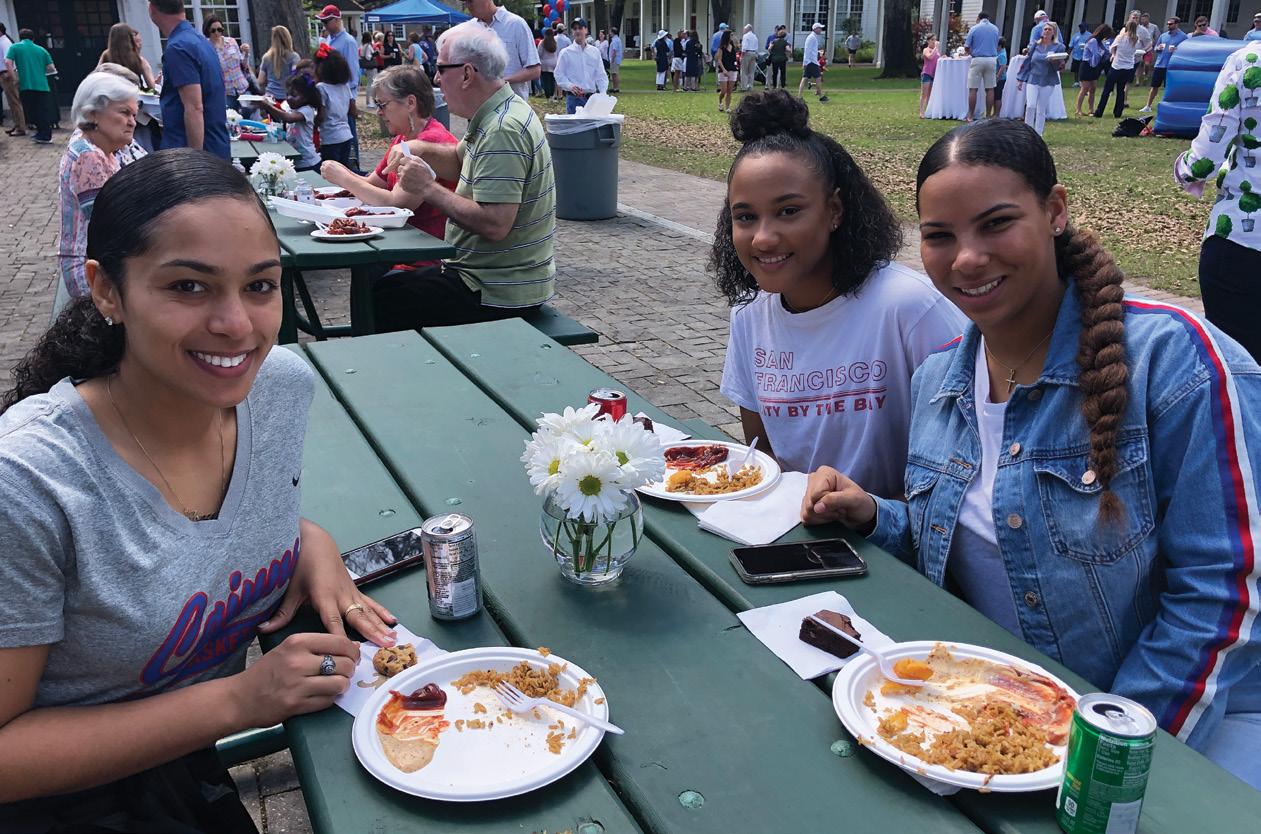



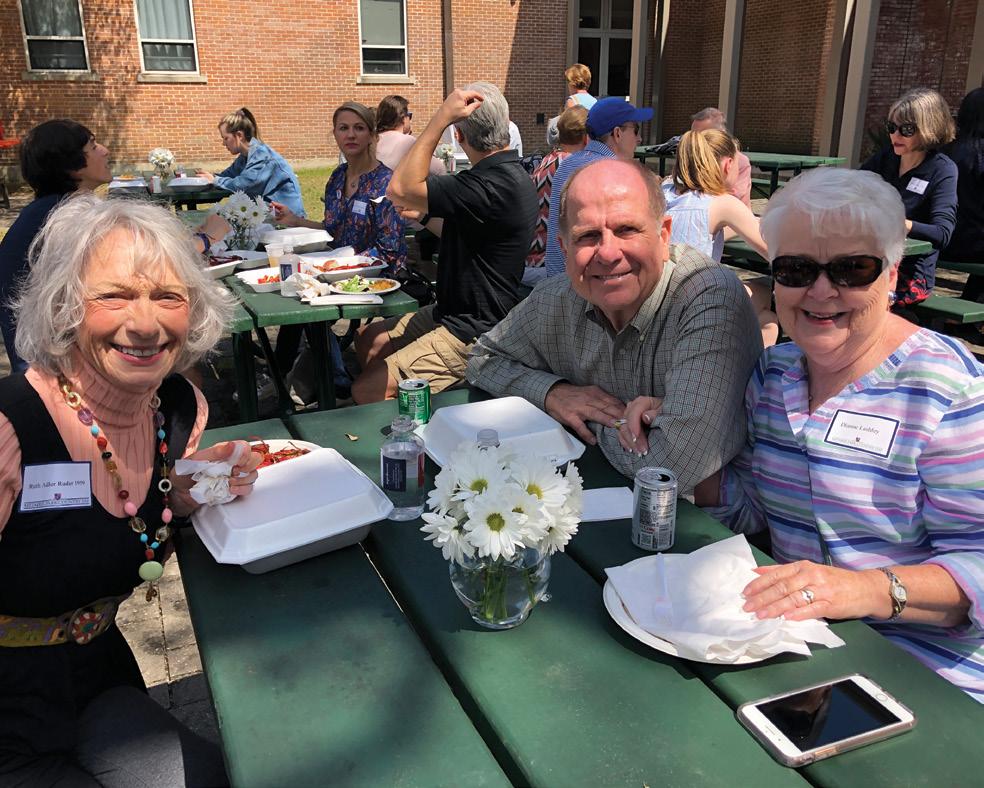

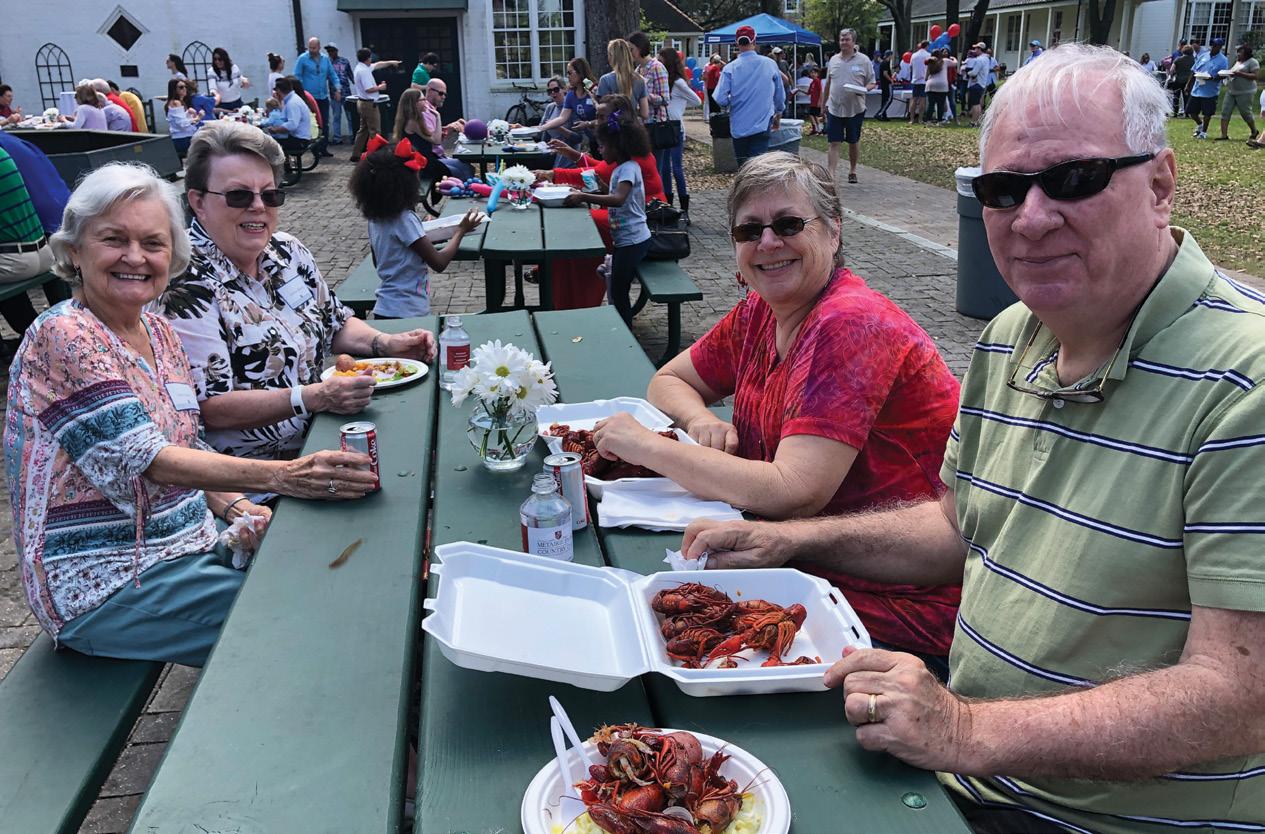






Alumni Crawfish Boil
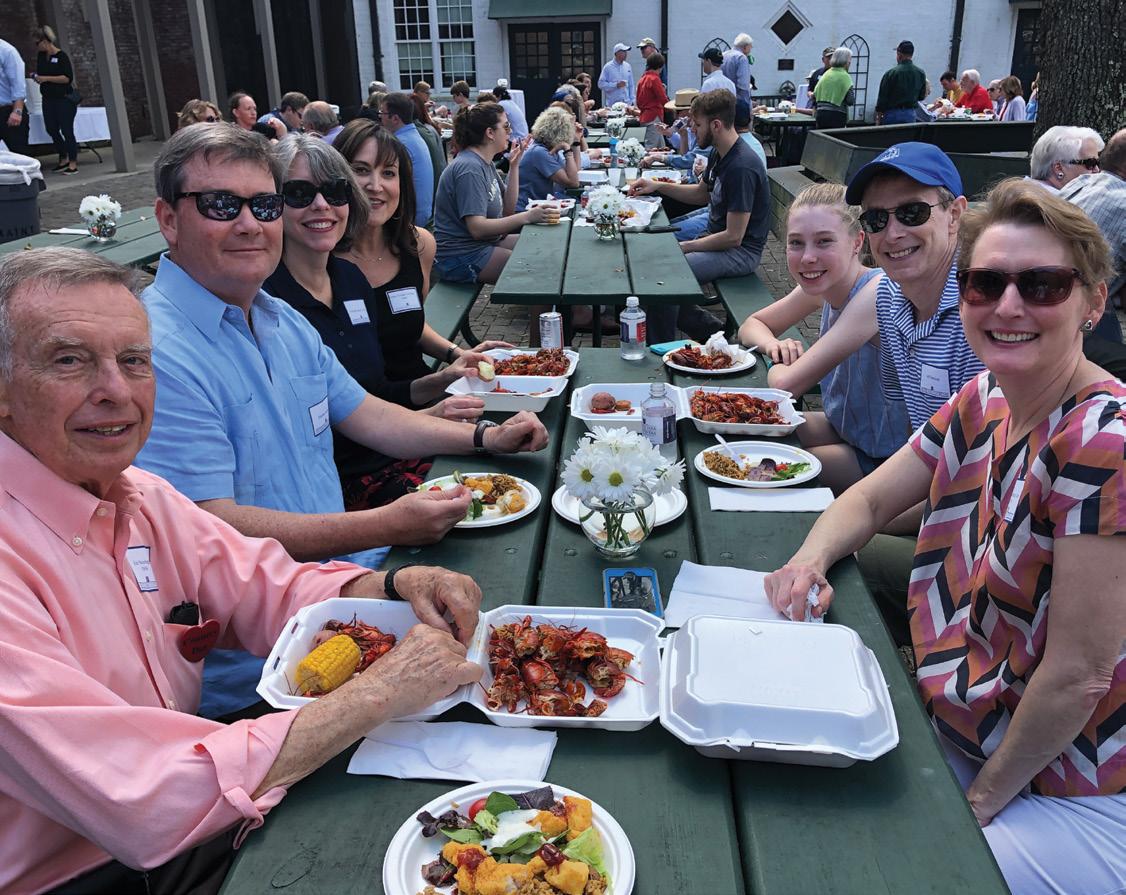



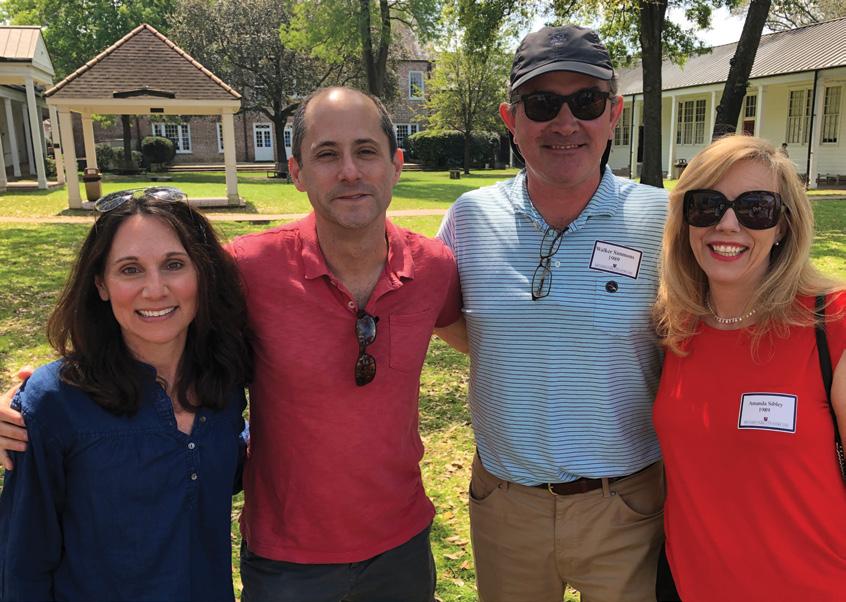
A Conversation with Shay Steckler
BY SHAY STECKLER 2002
For many students, school brings a sense of boredom and dread. When graduation comes, they don’t come back for visits, but if you’ve ever attended or been around Country Day, you know that feeling is not prevalent here.
In her May 2018 speech at graduation, Senior Class President Camille Shall stated, “Country Day is not just a school. It is so much more. It is not only the curriculum, but how it’s taught; not only the teachers, but the entire staff and the relationships made; not only the traditions, but the experiences we have had with these traditions.” This sense of belonging to the Country Day community can be felt not only at graduation, but at alumni events around the country and daily on campus.
There is something unique about Country Day; most students like to come back, visit, and connect with their fellow grads. Some of us like it so much, we apply for jobs. Thus, there is a unique group of faculty on campus who have the shared experience of being alumni of Country Day. It’s a group that is fully invested in the success of the School, because it’s our School. It’s our home. I sat down with three of them last summer to talk about what being a faculty alum means to them and to chat about memories surrounding these shared experiences.
Caitlin Hesse Collier, class of 1987, spent six years as a student and has just finished her twelfth year working here as the Lower School counselor. Alyce Newlin Hesse, class of 1997, is a thirteen year vet who has finished her sixteenth year here teaching Upper School math. Charlotte Haygood Gregory, class of 1998, is also a thirteen year vet who for the past ten years has been a K-1-2 coteacher and PMK teacher. Finally, I was a student for ten years and have been here twelve years teaching Middle School French. Mostly there was laughter and “oh yeahs” as we reminisced.

Shay Steckler: First things first. Are you red or blue? Caitlin Collier: Red Charlotte Gregory: Red Alyce Hesse: Blue SS: Blue
CC: Oooh, half and half. AH: It’s interesting to me how I always felt that some people were very red or very blue. It’s hard to describe what that means, but I always had a sense of it. CC: Can I tell you a funny story? When I started here, Maggie Millet, one of my teachers, said to me, “Do you remember if you were red or blue?” And I said, “I really don’t remember but for some reason red comes to mind.” She said, “Ok, because the records from your year are gone. We lost them in Katrina. So I don’t know what you are.” I said, “Ok, red’s fine.” Well, guess what, I was actually blue so my family is really mad at me. Audible gasps from the rest of us. AH: I was just gonna say I was feeling a little blue there. CC: Well, now we are all red. SS: You made everyone switch? Was Shelley like, “What are you doing? “[Shelley is Caitlin’s sister.] CC: Shelley said, “Oh my God, we were blue, Caitlin!” I was like, “Oopsies.” AH: Yeah, I was a little surprised there. I was really feeling blue. CC: As soon as I realized the mistake, I told Maggie Millet, and she said, “Oh well, too late now. You’re red.” So there’s no going back.
SS: How long were you gone from Country Day? Do you know what I mean? For instance, I was gone a total of five years because I went to college and then to France. CC: A long time. Can I use a calculator? AH: I was gone for six years – college, and I lived in Birmingham, and I was an engineer. It’s scary when I think about it. Plus I was a 13 year vet. I’ve been here a long time. CC: I’m doing my calculations. What year did I start? CG: I think I was gone between eight and ten years because I went to college, and then I taught a couple of other places. Then when I came back to New Orleans originally, I was at a different school. Then Katrina happened, and I went back to grad school. I think it’s more like eight or ten. CC: Ok. [Caitlin holds up her phone’s calculator to show us.] Me, twenty. SS: That was a long hiatus. Fellow teacher and alumna Jenny Irwin refers to this as “the missing years.” CC: I’m glad I did everything in those twenty years before coming back. CG: Yeah, I agree.
SS: Are there teachers on campus now who taught you? Everyone in unison: Yes. SS: Do you call them by their first names, and is it weird for you to do so?
AH: I call everybody by their first name except Mr. Beachy, and I have really struggled with Howard Hunter. CC: That was mine!
AH: - Because he was Coach Hunter forever.
CC: Me too! Yes.
SS: I remember calling him Howard for the first time. We walked past each other on the walkway, and by the way, this was definitely year two or three for me, and I said, “Hey, Howard,” and then in my head I thought, “Oh my god! I can’t believe I just did that.” I was freaking out. Also Ms. Powell. I never did call her anything but Mrs. Powell. CC: Oh, I think I called her Mrs. Powell, too. CG: I saw her recently and called her Mrs. Powell. CC: It’s hard for me to say Bill for Mr. Beachy whereas for Mary Beth Ellis it was day one, “Hey, Mary Beth.” AH: See that’s funny cuz I call her Madame now but I didn’t call her Madame in class. I called her Mrs. Ellis.
CC: Yeah, we called her Mrs. Ellis. AH: Now I call her Madame.
CC: Now I call her Mary Beth, but she was easy, at least for me. Well, I was really close to her as a student. It wasn’t a leap for me. I was super comfortable with her because I could be myself. CG: If I ever ran into Louis P., I’d still call him Louis P. He loved our class.
CC: We called him Monsieur.
CG: Everyone in the class had a French name. You turned into a French person when you walked into the classroom so you had to choose your own name, and his was Louis Philippe. CC: I wonder what mine was. Wait, remember how he’d have those colored things for the exam for orals? AH: Oh yeah, I remember that! SS: I forgot about that! CC: When it was your turn you had to go pick your color. AH: Yes! He always had those. He took all the pictures for athletics, remember? And at the Athletic Banquet, you’d walk through the hall, and all of his pictures would be displayed. SS: He took the pictures for the shows, too Anyone else? CG: Barry Kaiser was my photography teacher. CC: I had Maggie Millet. AH: Anyone else who had me in class? Ms. Petersen. See, when I talk about being a student, I revert back to calling them by last names. Well, Mrs. Irwin was here. Jenny was here. She never taught me, but she was here. CG: Suzanne Perlis. AH: Yup, Suzanne Perlis taught me. Ms. Plauche, too. A lot of the Lower School teachers were here.
CG: Sandy Thornburg was here. SS: Who were your teachers in Lower School? AH and CG: Ms. O’Neil!
AH: We were in room 5 together. I loved Ms. O’Neil. CC: Cute. I came in seventh grade. SS: I came in third, and I had Sally Treuting in Room 9. AH: I had Marsha Biguenet in Room 10. CC: So you have a lot of your teachers. AH: A lot of my teachers are still here.
SS: How does being an alum help you connect with your current students?
CG: My students love to know that I went to Country Day, and it’s fun because they always ask what room I was in, or they ask what did I like to do as a little kid, that kind of thing. It’s fun to talk to them about it.
AH: Mine, well, the high school kids can go for a while without realizing it, and then they’ll say, “Oh, you went here?” Sometimes they are interested, and sometimes they are not interested. Or they ask if I had a certain teacher. SS: I was going to say they get more interested in shared teachers.
AH, Yes, I think in my 20s it helped me connect with them more, but now I’m just old. Like, you have four kids, you must be really old. SS: For the record, Alyce is not old. AH: I know, but to them I am, right? Think about when you were in high school and think about someone who was forty. That was old. Right? CC: The Lower Schoolers think it’s cool. It’s definitely a connection, but I could see that with the older kids. SS: Yeah, I can connect with the sixth graders because they have Suzanne, and I had her my senior year, and when they find that out they are in disbelief and excited at the same time. They ask, “Did she do this then?” and “Did she whatever then?” Caitlin, do you get to connect with any of the kids like that? CC: Yeah, they think it’s cool or fun. They may want to ask questions. I wasn’t in Lower School, but they will ask what room I was in.
CG: We talk a lot about it in PMK because the fact that I do the puzzles. I remember doing those puzzles as a kid. I remember learning chess when I was a kid in PMK. So those specific things that I teach in PMK now, you know it’s fun to share that with the students because they can start to imagine themselves a little bit as a grown up or maybe as a teacher, too. That’s fun.
SS: I definitely feel a connection not only with my middle school students, but also with the students who participate in the drama productions. That was my favorite thing in high school, and now I get to do the choreography and work
with them, and I just adore it. We will frequently talk at rehearsals about shared experiences being backstage during a show or at rehearsals.
CC: I think for me, it helps with the parents sometimes because they know that I grew up in this environment, this school culture, and you know, that I understand different elements of it.
AH: Right. SS: You’re right. I always say at my spiel at Open House, which you’ve attended five years now, Caitlin, that I learned French in this program. It’s like you’re a commercial for the school. Charlotte: You’re your own advertisement. CC: It’s true. Part of what I say when I talk to parents sometimes is that being at Country Day as a student shaped my development as a person. 100%. The relationships that I had here, growing up in this community, my friends, the teachers, all of it really shaped my development. That for me is where I find that connection.
SS: What does being a faculty alum mean to you in terms of our role in the community and with our colleagues? CC: For me, I think we have our own history. It adds another layer to our investment in the community and our understanding of the community and our connection. SS: I like being a part of a niche group within the community. It’s fun, even if you didn’t go to school with these people, that we have a shared experience. AH: There’s something that you get having been a student here that I don’ think you get if you weren’t. There are a lot of things that I take for granted. It’s hard for me to answer when someone asks, “What do I need to know?” or “What is the culture like?” It’s so normal for me, and it’s so natural, that I don’t even know how to articulate it sometimes.
CG: In new faculty meetings, there was a new teacher once who told me, “I can’t believe you didn’t tell me about how loud it would be in the gym at the opening assembly.” That’s right. It is loud, but we all know it’s going to be loud. But walking into that gym for the first time, on the first day of school, could certainly be overwhelming. CC: Oh yes - the energy! SS: It’s not the volume that takes me aback. It’s when everyone sings Flags Fly For Country Day. You know from the perspective of a new person, it’s probably really weird. CC: Whereas, I love it. It makes me all teary. CG: I get emotional. CC: I do. I get emotional. And every year, the bell ringing makes me emotional.
AH: The bell ringing really means it’s the end of the school year. SS: The bell ringing is my favorite tradition. CC: It’s great. It’s a great tradition, but I think we have that history within ourselves. It’s part of your experience here. CG: It feels stronger.
SS: Can we talk about the weird phenomenon that no one ages or changes? AH: Madame is going to look just the same for forever. CC: Mimi Landry is like that. CG: Betsy Petersen looks exactly the same. SS: She does look exactly the same! CG: So does Marsha.
CC: I said that when I first started working here to Madame and to Diana Powell, who looked exactly the same. I told them, “I want this to rub off on me!”
SS: That’s why I applied for the job! CC: The CD fountain of youth. I think if you love what you do everyday, it helps you. And being around the kids, all that energy keeps you young. CG: I remember there were some friends from college when I decided to come back and teach who said, “Why would you want to go back to the school where you attended as a student?” They had their own visions of what their lives were like in school, and it was negative for them, and I just kept saying, “No, it feels just like home. It actually is a wonderful job opportunity.” CC: It’s that full circle. I used to say, when I was living in Oregon, that working here would be my dream job that I’d love to work at CD. I’d love to be the counselor. That was part of the reason I went in to social work and in to mental health was because of my experience here. People would say, “Well, you kinda have to move back to New Orleans. You live in Oregon.” And it all worked out, and I had that full circle moment, too.
SS: Is there something that happened as a student that changed or is there a tradition that you still appreciate? CC: Well I did not appreciate this, but when I started in 7th grade, they still told the students that they would have to ride a goat. I was completely, beyond terrified until a very sweet boy (who shall rename nameless) leaned over and told me it was joke and no one was really going to make me ride a goat. Thank goodness. He’s still a very good friend of mine! CG: Do they still do Daisy Day? AH: It’s different. Instead of girls vs. boys it’s now red vs. blue. SS: That changed recently. AH: Yeah, just in the last few years. So there’s now a red daisy day and a blue daisy day. CG: So is there a daisy queen and king? AH: I don’t even know.
SS: I don’t think they do that anymore. AH: Yeah, I don’t think so, but there is someone who wins. SS: Right, someone wins but there’s no king or queen.
AH: Maybe they do it at a game. Maybe. CC: Maybe so. AH: There were things in Homecoming Week. Didn’t there used to be a faculty skit or something? SS: Yes, skit night. AH: I’m not saying I feel the need to bring that back, but as a student I remember that.
CC: Someone, maybe the principal, used to be Santa. Who was that? Was that the Head of School?
SS: Ronnie dressed up as Santa. CG: Aw, Ronnie. CC: Well someone did for us, and it was the goofiest. I remember laughing until I cried. The teachers were dressed as elves.
SS: Wait, we didn’t talk about the dining and maintenance staff. There are current maintenance staff members who know me from being a student. AH: Oh, yes. CC: Carol! She’s gone now, but Carol was my person who I really remember. CG: Kenny was my bus driver. SS: Well, Kenny and Wayne and Ronnie gave me such a hard time, teasing me for fun.
SS: Last topic. Lunch. Do y’all have any opinions on lunch? I just know that Alyce and I have talked about how we’re sick of red beans and rice.
AH: I eat them now sometimes, but for the first ten years I worked here I could not eat them.
CC: I don’t cook them at home.
SS: They are delicious, but 20 years, every other Wednesday, I just can’t do it. CC: Really? I love them. CG: I think it’s my favorite lunch. CC: I do love the red beans and rice.
SS: What’s your favorite lunch? AH: Now my favorite lunch, that we did not have when I attended Country Day...Thai chicken curry. CC: I have to say I love that, too. CG: The other day there were parents here for Louisiana Day, and we were serving red beans and rice and the parents asked why there were croutons on the table. SS, CC, and AH: And vinegar! CG: The vinegar made more sense, but they were very stumped by the croutons. I tried to explain to them why and what they used to look like when they were teeny tiny. SS: You know what else we don’t have anymore? Ginger snaps and... AH, CG, CC: ...and applesauce! AH: I loved that. I loved some of the desserts we used to have.
SS: Those were so good. AH: The upper schoolers don’t do the crouton thing as much. CG: Really? CC: Any excuse to eat a crouton in Lower School. Oooh, more croutons please! CG: Croutons and rice!
CC: Yeah, I started the vinegar on my red beans here. No one in my family does that. That was definitely a Country Day thing. AH: Yeah, for sure. CC: ...but I love it.
SS: Cheese buns?
CG: Yes.
AH: Yeah, I do love a cheese bun. CC: I love a cheese bun. No tuna, just the cheese bun. SS: Oh, no, no, no. You gotta have the tuna. AH: I sometimes do the tuna.
SS: You gotta have the tuna and the fritos to dip. CG: To dip the fritos in the tuna! SS: Yes!
CG: And a pickle. SS: Yes, and a pickle. CC: Do you put your tuna on the cheese bun? AH: Depends on the day. Sometimes I do. Sometimes I don’t. Depends on the day. CC: For me, it’s straight up cheese bun. SS: Do you get a pickle? CC: No. I love pickles, but not on cheese bun day. I don’t know. Just straight up cheese buns. SS: This is great: How do you take your cheese bun? The best is when it’s Mississippi Mud for dessert that day. That is the perfect lunch. AH: Ooh, so good. You gotta get the one that has the extra vanilla wafers.
CC, CG, SS: Yes! Unfortunately, our time was up here, though I’m positive we could’ve kept talking - especially about our favorite teachers and meals. Faculty alum don’t all get together that often, but when we do, it is like a family reunion. (One where they serve cheese buns.)



